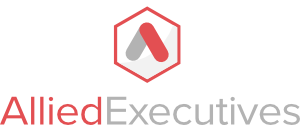5 Strategies to Win the War for Talent
Written by Kurt Theriault for C-Level Magazine December 2016
In November, Allied Executives hosted over 300 business owners and leaders as part of our “Talent as a Strategy” workshop. Why this topic? We surveyed a number of Twin Cities small and medium enterprise owners, and 75 percent indicated “talent issues” as their top challenge and priority.
Feeding this challenge is the state’s low – 3.5 percent – unemployment rate (nationally it’s 5 percent), while more companies in our state are creating jobs than any other in the union (Minnesota is ranked No. 1 in Gallup’s Job Creation Index).
Over the course of a couple hours we tapped into local leaders in their companies to gain insights, specific ideas, and learn from the successful experiences they have had within their own firms, addressing the talent issue.
What follows are five strategies shared during the course of the event for how to effectively – find, attract, select, onboard, develop, and engage key talent with your organizations.
Strategy #1 – Seek Talent in Non- Traditional Places
There are numerous changes and improvements in the programs being offered by our state’s universities to students, that directly address the skills and talents needed today in high-demand and high-growth professions.
Feedback and ideas shared between the state university system and the MN Chamber of Commerce – and other groups – have led to the re-tooling of programs and courses in highly technical fields within manufacturing – robotics, welding, tooling, etc. – as well as high-growth industries within health care and pharmacology.
Another option for finding new technical talent, is the SciTechsperience program. Administered by the Minnesota High Tech Association, SciTechsperience is a free, state-funded program that connects college students majoring in science, technology, engineering, and math (STEM), to paid internships in small to mid-sized Minnesota companies. Companies receive a dollar-for- dollar matching grant that covers 50 percent of the wages.
Many programs like these are being developed and have become a great, effective, outlet for finding prepared and emerging talent.
Strategy #2 – Minimize the Likelihood of a Bad Hire
Today, there is virtually zero unemployment within highly skilled or technical fields. Therefore, being able to attract and select the very best candidates is critical. Six things to consider when hiring:
- Build a compelling story to tell about your organization. Beyond the role itself, the best candidates want to know where your organization is headed, about the culture, the people, and where you are working to improve. Be prepared with this story.
- Have a recruiting strategy. The best candidates are likely passive candidates versus. active ones. Determine who you are looking for and where you will most likely find them. LinkedIn Groups, your professional networks, and schools and associations are great sources.
- Determine who is doing the interviews and how interviews will be conducted. The hiring manager should be the first person to interview. Then, determine the timing, format, steps and which tools will be part of the interview process. Don’t let the process drag on, because a candidate’s excitement to be a part of your organization will wane quickly.
- Be open and honest about compensation and benefits. Getting to the finish line with a candidate and discovering you have a large gap in what you are willing to pay – and what they will accept – is bad form. Don’t hide from it. Bring it up early.
- Make sure the hiring manager makes the offer. Don’t abdicate this to another team member or outside entity. It is a powerful first impression and opportunity to express how thrilled you are the individual is joining your team.
- On-Boarding. Have a specific plan and use what you have learned during the interview process to shape the plan. Getting a new team member up to speed quickly and productively is important to both employer and new employee and a huge part of retention. After all, 40 percent of employees who leave their job voluntarily, do so within the first 180 days (source: Equifax).
Strategy #3 – Consider Implementing a Talent Management System
Many of us have been part of an organization in which the training consisted of “here’s your desk, here’s the job, and I’m sure you will figure it out along the way.” That won’t cut it today. It is far too costly in time and money.
It may be time and money beneficial to leverage a system to help you coordinate and manage your talent program. How will you know? If human resources finds itself spending more time administering and managing paperwork and reports and less time building a pipeline of talent, moving people through training and development, and helping people grow into senior leaders, it may be time.
A good talent management system will ease document control, and make continuity, scalability, accessibility, and efficiency possible.
Strategy #4 – Invest in Your Existing Talent
Everyone who grows to a certain level of competency will need to make a transition into or out of a role. You want that to happen within your own firm if at all possible!
Identify the “high potentials” within your organization. These are the individuals who demonstrate high levels of aspiration, ability and engagement. Once identified, find or create on-going, blended (online, in-person, individual, group) development opportunities that further develop hard and soft skills.
Your investment in their growth will lead to higher engagement, retention and impact for your organization.
Strategy #5 – Create an Environment That People Want to Become and Remain a Part of
Every organization has a culture and a values system. What matters is whether it is defined or undefined. In a vacuum, a company’s culture will define itself – eventually.
Ask yourself, why does your organization exist? What does the organization stand for? What does the organization want to be known for? What are you known for?
Now, rephrase the questions. Why does your organization exist – for your employees? What does the organization stand for – by your employees? What does the organization want to be known for – by your employees? What are you known for – by your employees?
What you are on the outside is defined by what you are on the inside. Start on the inside, by determining how you can make your organization the place that everyone wants to work.
Nail that, and live by it, and your business can be magnetic not only for attracting and retaining great talent, but also great customers.
Article featured in C-Level Magazine December 2016


